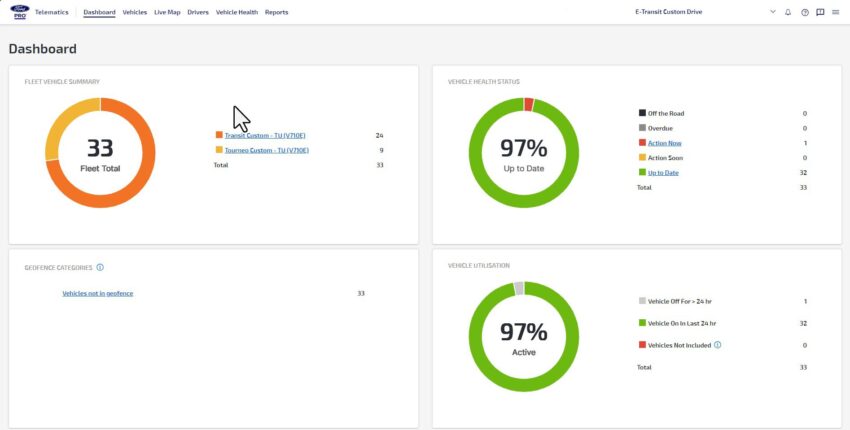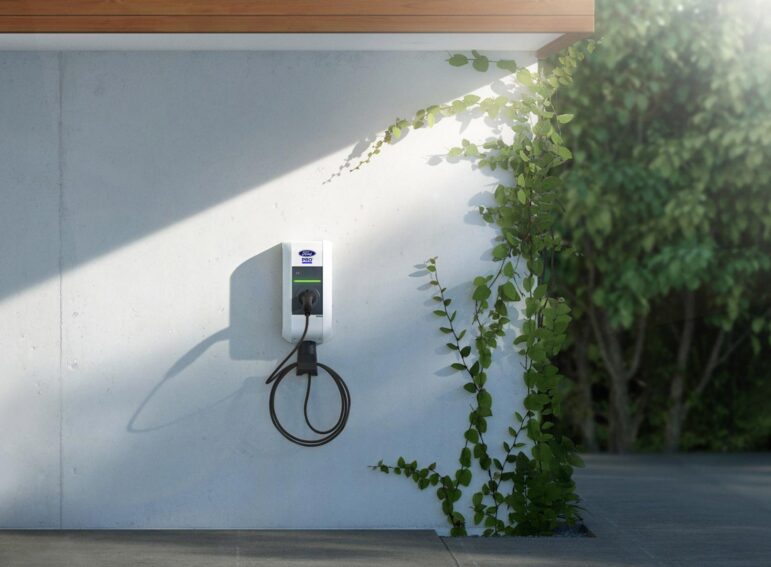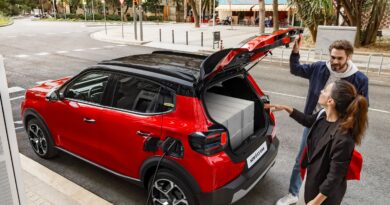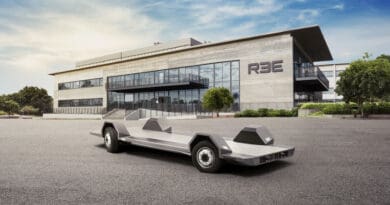
Connecting to the van of the future with Ford’s new fleet technology
Finding out how Ford is helping small businesses manage their electric vans.
As well as being out in Germany recently to drive the hugely impressive E-Transit Custom and the wild E-Transit Custom MS-RT, I was there to learn how Ford is supporting businesses switching from a diesel fleet to its new range of electric vans through its telematics programme.
Ford’s reputation as the van maker of choice for small businesses is legendary. The Transit is known as the backbone of Britain and the smaller Transit Custom has, on occasion, outranked every other van and car in the UK’s monthly new registration figures. It’s a similar story across Europe, where the Transit family is the go-to option for tens of thousands of small and medium sized businesses (SMEs).
Ford says it’s not going force businesses into electric vans – there will be diesel and PHEV variants on sale for years – but it clearly hopes its new technology will help persuade customers into E-Transit variants by making life simple for them.
Instant data
While in many ways running a fleet of electric vans is no different than running a fleet of diesel ones there are a few additional challenges, particularly around range and charging. And it’s here that Ford hopes to wow customers with its Ford Pro Telematics platform.
While private owners already have easy ways to track everything from battery levels to whether their car’s windows are open via smartphone apps, it’s not so easy for businesses running multiple vehicles.
Ford says its new system is about addressing this and simplifying the shift to electrification as well as reducing costly downtime for operators. It centralises everything in one system that’s easy to monitor and manage and that’s scalable whether the company has 2 vans or 20.
Out at Ford’s technical centre in Cologne, we saw how businesses from a major air conditioning repair firm to an artisan bakery are using the system to simplify operating their vehicles.
Fleet managers have a desktop tool which is connected to each vehicle, providing a live overview of the entire fleet, plus granular data on every single van. They’re alerted if a driver’s pre-drive check throws up any issues and can arrange for the van to be booked in for maintenance directly through the system. They can even (in theory) schedule a visit by a maintenance van while the affected vehicle is on a job, cutting vehicle downtown.

It also lets them track a van’s location and state of charge, helping plan the most time and energy efficient routes between jobs and keep track of a van’s charging requirements, for example, deciding whether a particular vehicle could be diverted to another nearby job without issue.
On an individual basis, drivers can monitor their van’s range, efficiency and charging status via a smartphone app as well as viewing information on their driving efficiency and van’s maintenance schedule, and reporting any issues directly back to base.
Such systems, says Ford, keep drivers and managers informed and help reduce the amount of time and money lost when a van has to be taken off the road.
Beyond the vehicles, Ford offers home and depot charging hardware that links back to the app. That means drivers can plug their Ford van into their Ford wallbox at home and the app will automatically file the correct expense information based on their charging record and energy tariff, saving them or their fleet manager from the hassle. It’ll do the same on Ford’s Blue Oval public charging network, which covers 600,000 chargers from most of the main operators across Europe and more than 30,000 here in the UK.

To encourage business to embrace electric and use its new telematics systems, Ford is offering it free for the first year, charging £15 per vehicle per month after that. That cost could add up for a large fleet but the payback in terms of saved downtime and ease of operation may well be worth it.
It’s certainly an innovative idea and one that I can imagine appealing to managers of small to mid-sized fleets who want a one-stop shop for running their operations. On top of which, they’ll be using possibly the best electric van on the market.





